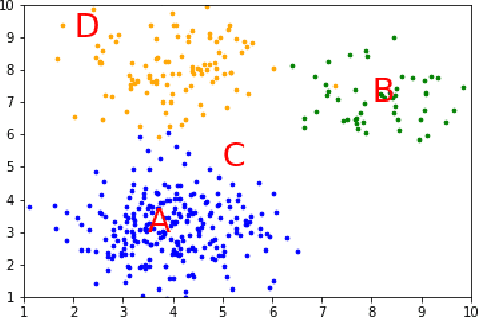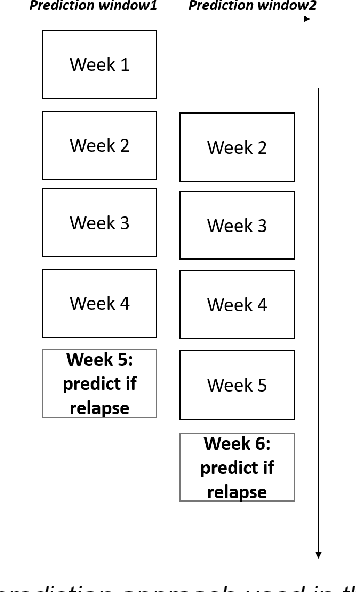Routine Clustering of Mobile Sensor Data Facilitates Psychotic Relapse Prediction in Schizophrenia Patients
Paper and Code
Jun 22, 2021



We aim to develop clustering models to obtain behavioral representations from continuous multimodal mobile sensing data towards relapse prediction tasks. The identified clusters could represent different routine behavioral trends related to daily living of patients as well as atypical behavioral trends associated with impending relapse. We used the mobile sensing data obtained in the CrossCheck project for our analysis. Continuous data from six different mobile sensing-based modalities (e.g. ambient light, sound/conversation, acceleration etc.) obtained from a total of 63 schizophrenia patients, each monitored for up to a year, were used for the clustering models and relapse prediction evaluation. Two clustering models, Gaussian Mixture Model (GMM) and Partition Around Medoids (PAM), were used to obtain behavioral representations from the mobile sensing data. The features obtained from the clustering models were used to train and evaluate a personalized relapse prediction model using Balanced Random Forest. The personalization was done by identifying optimal features for a given patient based on a personalization subset consisting of other patients who are of similar age. The clusters identified using the GMM and PAM models were found to represent different behavioral patterns (such as clusters representing sedentary days, active but with low communications days, etc.). Significant changes near the relapse periods were seen in the obtained behavioral representation features from the clustering models. The clustering model based features, together with other features characterizing the mobile sensing data, resulted in an F2 score of 0.24 for the relapse prediction task in a leave-one-patient-out evaluation setting. This obtained F2 score is significantly higher than a random classification baseline with an average F2 score of 0.042.
 Add to Chrome
Add to Chrome Add to Firefox
Add to Firefox Add to Edge
Add to Edge